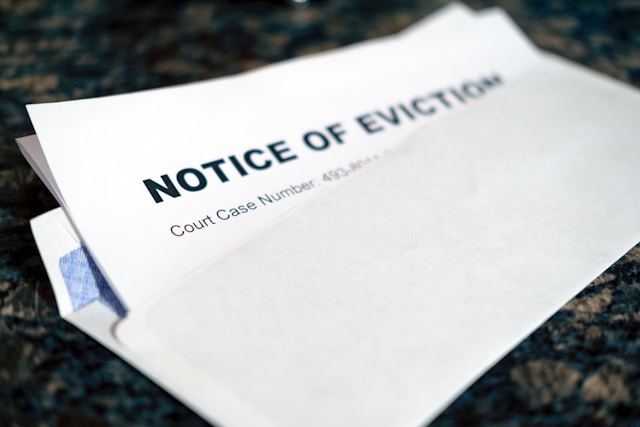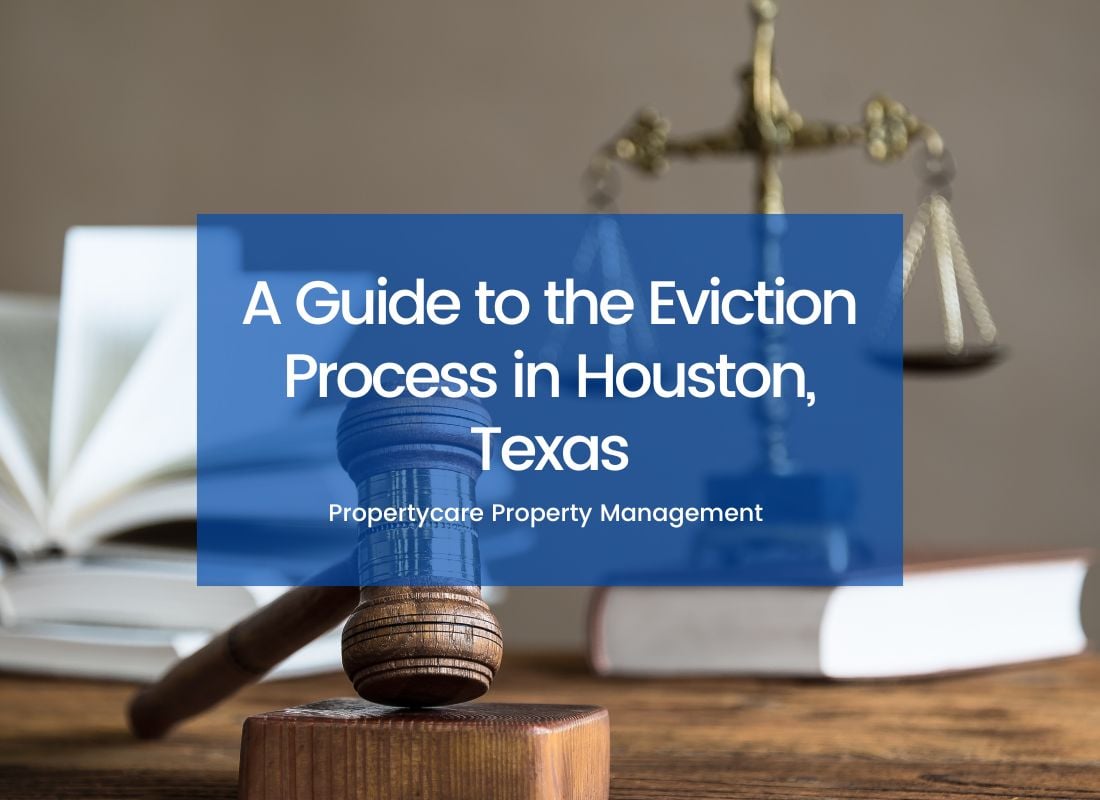Despite your best efforts to rent to quality Texas tenants, a time may come when you’ll need to carry out an eviction. The eviction process, however, must meet certain legal criteria. You must have a legitimate reason for the eviction and follow the due process under the Texas landlord-tenant law.
With that in mind, we at Propertycare Property Management have put together an overview of everything you need to know when it comes to tenant eviction in Texas. The following are all the elements that make up the legal eviction process in Texas:
Reach Out to Our Property Management Experts!
Legal Grounds for Eviction
In Texas, just like in all other states, a landlord cannot commence an eviction against a tenant without a cause. A cause is a legally justified reason for eviction. In Texas, they include:
- Failing to pay rent on time.
- Not moving out after the lease is over or staying without a lease.
- Violating a term of the lease agreement.
With any of these reasons, you can then begin eviction proceedings against the tenant.

Notice of Eviction
Once you have legal grounds for removing the tenant from your rental you must proceed with serving them a notice. Under Texas landlord-tenant law, landlords have multiple notices they can choose from to terminate a lease. That said, the one you serve the tenant must be appropriate for the violation committed. Here are the different kinds of notices landlords can use:
3-Day Notice to Quit for Nonpayment of Rent
You’ll need to use this notice to terminate the lease of a tenant who has fallen behind on their rent payments. Unlike most other states, Texas landlords are mandated to provide their tenants a grace period of 2 days. This, therefore, would mean that if rent is due on the 1st of every month, then rent would become late on the 3rd. The only exception to this would be if the lease states otherwise.
1-Month Notice to Quit for “Tenants at Will”
A tenant at will lives on a rental without a lease. To evict the tenant, you must first terminate their tenancy by serving them a 1 month advance notice. The same notice applies to tenants who continue to stay on your rental after their lease is up.

3-Day Notice to Quit for Lease Violations
A written lease is a legally binding document that requires a tenant to abide by certain obligations. For example, use the rental unit for its intended purposes, keep the unit clean and sanitary, report maintenance issues on time, and make small repairs under the lease.
If the tenant fails to keep up with such responsibilities resulting in issues like serious damage, it’d be a serious violation. Consequently, you’d be within your rights to evict them from your investment and even make deductions from their security deposit. Under the Texas landlord-tenant law, you must give such tenants a 3-day to fix the issues or move out.
Get in Touch with Our Property Managers!
Delivering the Eviction Notices
As per Texas law, notices must be served per prescribed criteria. The following are the options you have:
- Personal delivery to the tenant.
- Attaching a copy on the main entry door of the residential rental.
- Hand delivery to a member of the household who is at least 16 years old.
- Mailing a copy to the tenant’s last known address. Make sure to request a return receipt.
Filing the Eviction Lawsuit
If the tenant corrects the violation in the allotted time, the eviction process will not continue. However, if they don’t, you’ll need to file an eviction suit in court in the appropriate Justice of the Peace Court in Texas.

Tenant Eviction Defenses
After delivering the proper notice, the tenant may choose to respond. The tenant will have up to 14 days to file a written answer with the court. The following are some of the eviction defenses they could give to try to stop their removal:
- The eviction is an act of discrimination based on their race, color, nationality, or any other protected class. This would be a violation of the Fair Housing Act.
- The tenant didn’t commit the violation alleged.
- The tenant fixed the violation within the stipulated written notice period.
- The landlord is retaliating against the tenant for exercising a legal right.
- The landlord filed the complaint before the period was over.
- The method of serving notification was improper.
Court Hearing
When attending an eviction hearing several things can play out. A landlord can win an eviction lawsuit in two ways:
- They see all the evidence presented and the court rules in favor of the landlord
- The county court issued a default judgment in the landlord’s favor because the tenant failed to answer the initial suit.
Writ of Possession
Under Texas law, if a landlord wins the eviction suit, the county court will issue a Writ of Possession. This is a legal document that acts as the tenant’s final written notice to move out. Per the Writ of Possession tenant will typically have a 5-day grace period before it is put into action. Once it is, the tenant has 24 hours to move out. After that, if they fail to adhere to the Writ of Possession, the tenant will be risking a forceful eviction by the sheriff or constable.
Bottom Line
Evicting a tenant requires legal knowledge of both you and your tenant’s rights and responsibilities. You must then diligently follow the procedure as enshrined under Texas landlord-tenant laws.
If you’ve been wanting to work with a management company, turn to Propertycare Property Management. Our skilled team can help you effectively manage your properties. Get in touch to learn more about our full-service property management company!
Disclaimer: Please note that the information provided in this blog is intended for general guidance and should not be considered as a replacement for professional legal advice. It is important to be aware that laws pertaining to rental management may change, rendering this information outdated by the time you read it.

